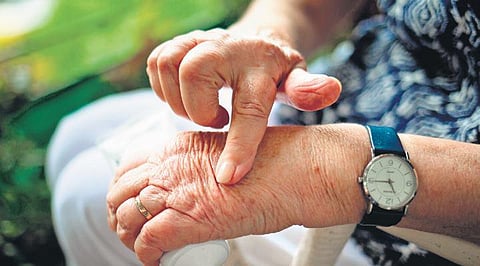

You may wonder how can a blood sugar-related condition be associated with bone/joint health. The fact is, if you have diabetes, you are at an increased risk of bone and joint ailments. Can you do anything about it? Luckily, yes! Read on to know more
Link between diabetes & bone/joint health
Diabetes & various bone conditions
Charcot’s Joint (neuropathic arthropathy): This happens from nerve damage caused by diabetes. Breaking or twisting the foot becomes common as small breaks and sprains can put pressure on the joints of the foot
Symptoms
Treatment
Rheumatoid Arthritis (RA) & Type 1 Diabetes:
One autoimmune condition increases the risk of developing another. Both Rheumatoid Arthritis and Type 1 diabetes are autoimmune disorders and can co-exist. Low bone mineral density is frequently observed in people with Type 1 diabetes
Symptoms
Treatment
Osteoarthritis (OA) & Type 2 Diabetes:
Type 2 diabetes halts bone repair and impairs the cartilage, causing joint pains. People with Type 2 diabetes have an increased risk of OA. Obesity is the main risk factor
Symptoms
Treatment
Diabetic Hand Syndrome (Diabetic Cheiroarthropathy)
The skin on the hands becomes waxy and thick. Finger movement becomes limited. This painless condition is common in chronic diabetic patients with both Type 1 & 2 diabetes
Symptoms
Treatment
Diffuse Idiopathic Skeletal Hyperostosis (DISH):
This is a kind of arthritis where the ligaments and tendons harden (calcify). These calcified areas can also form new, abnormal bone growth.
Symptoms
Treatment
Keep your bones healthy by
(Dr. Dasaradha Rama Reddy Tetali, senior consultant orthopaedic surgeon, Yashoda Hospital, Somajiguda. Email: www.drtdrreddy.com)
Haddi Buddy
Dr Dasaradha Rama Reddy